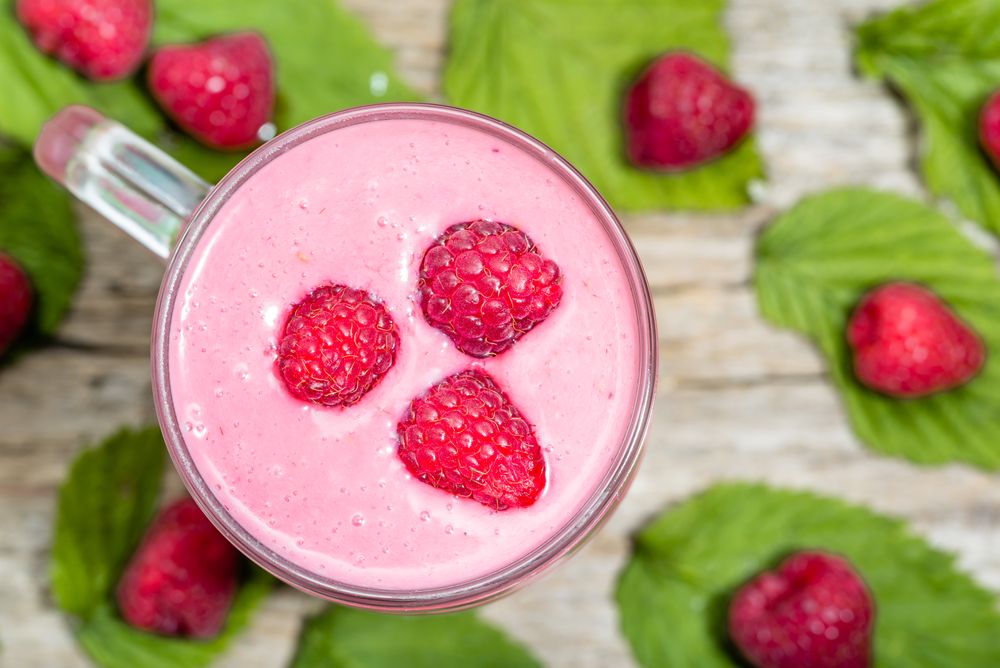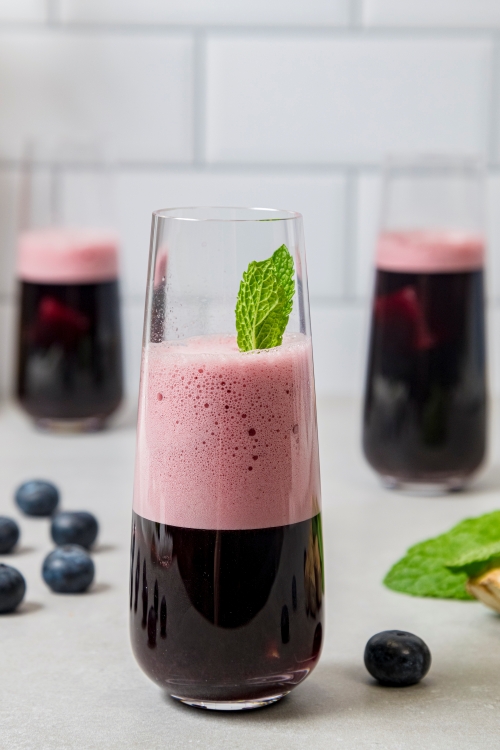Healthy beverages: Holistic wellness, function & flavor dominate innovation
Key takeaways
- Consumers increasingly seek beverages that combine taste with functional benefits, from protein and electrolytes to mental wellness support.
- Botanicals and plant-derived stimulants like maca, guarana, and yerba mate drive personalized, clean label wellness drinks.
- Functional beverages are shifting from quick caffeine hits to balanced, sustained energy that supports daily routines and overall well-being.
The lines between beverage categories have been shifting and blurring for several years, and holistic wellness is a major driver behind that. It influences everything from traditional sports nutrition to broader functional beverages and soda. As a result, F&B ingredient manufacturers are seeing consumers take a more proactive approach to health, choosing beverages that deliver multiple functional benefits over single-purpose products.
The rise of sports nutrition in everyday life is merging with holistic wellness trends, resulting in the daily consumption of protein-based drinks, botanical infusions, and plant-powered functional waters. Food Ingredients First looks at what is brewing in the beverage arena, with insights from Ingredion, Givaudan, Sensient, and Burcon NutraScience.
Hydration and beyond
According to Nandrianina Raboanason, marketing manager of Sensient Flavors & Extracts Europe, “positive nutrition,” specifically, is booming.
“Sports beverages can now target everyday consumers, not just athletes. It’s part of daily routines and diets, beyond just fitness goals. These consumers don’t expect beverages just to taste good — they are expecting benefits from it and a certain level of health support,” she says.
“Plain water wouldn’t be enough anymore. Take topics such as recovery, performance support, protein intake, or the excessive loss of mineral salts (covered by vitamins, electrolytes). The choices are now made considering those challenges which can also be met with a more ‘classic everyday lifestyle.’”

Active health claims
Janae Kuc-Langford, marketing manager, Beverage & Nutrition, USCAN, at Ingredion, says: “Our analysis using the Innova New Product Launch Database shows that 50% of sports nutrition launches in the US now include an active health claim. The most common are energy, sugar-free, and low/no-calorie.”
“High or good protein sources are also highly prevalent, alongside caffeine, antioxidants, vitamins, and fiber. Together, these paint a complete picture of what consumers seek regarding wellness benefits in beverages.”
In a recent beverage landscape consumer study Ingredion commissioned with FRC Liberman, five health-focused benefit areas important to consumers in the US and Canada stood out: Energy/performance, natural and sustainable, mental health, general wellness, and weight management.
 Consumers are increasingly turning to beverages to help support specific needs or functionalities beyond hydration.“These benefits align with specific consumer need states. For example, energy and performance ties to the need to boost and sustain energy throughout the day or during exercise,” explains Kuc-Langford.
Consumers are increasingly turning to beverages to help support specific needs or functionalities beyond hydration.“These benefits align with specific consumer need states. For example, energy and performance ties to the need to boost and sustain energy throughout the day or during exercise,” explains Kuc-Langford.
That said, she believes taste remains a top priority. “Fifty-four percent of consumers responded that taste is extremely important when choosing an RTD beverage. If a beverage doesn’t taste good, it’s unlikely to see repeat purchases, even if highly functional.”
For Ingredion, the opportunity lies in combining taste with added benefits. “Energy/performance and mental/mood benefits are closely related to taste. Digestive health and immunity are gaining additional traction, ranking similarly to natural/sustainable and weight management benefit areas.”
Meanwhile, Martin Schweizer, VP of technical development at Burcon NutraScience Corporation, observes a rise in holistic wellness driven by three key factors. He points to “a growing desire for healthier lifestyles supported by plant-based diets, increasing demand for sustainable, planet-friendly food options, and the emergence of a new consumer group using GLP-1 weight loss medications, who are seeking more nutrient-dense foods.”
“Consumers — especially those using GLP-1 weight loss medications — seek nutrient-dense foods and beverages supporting their lifestyle and dietary goals. They are more likely to reach for functional beverages that have an added boost to health and wellness, particularly beverages that incorporate protein to boost its nutritional profile,” he explains.
He notes that the health and wellness trend remains a strong driver of consumer interest in functional beverages with protein. “Protein content is a top desire and request from consumers. Protein remains the top choice front-of-pack listed ingredient for brands to deliver better-tasting food and beverages that are both better-for-people and better-for-the-planet. The challenge lies in formulating superior products without access to better-quality protein ingredients.”
Specific ingredients align with personalized beverages
We also speak with Simon Van Wieringen, global product manager, Wellness Food & Beverage at Givaudan, who shares that the company’s wellness botanicals help address physical and mental performance needs while aligning with the demand for natural and transparent ingredient lists.
“Personalized nutrition is moving from niche to mainstream, fueled by greater consumer awareness of hormonal health and body-specific nutrient needs. Gender-specific beverages that are formulated with ingredients to support women’s iron needs or men’s muscle recovery are gaining relevance, especially in active lifestyle categories.”
“Ingredients play a critical role here: Givaudan botanicals such as maca, cranberry, and lemon balm may be selected for support, while tailored vitamin and mineral blends like magnesium or B-complex are adjusted to physiological differences.”
He observes that the mental wellness market is also accelerating, with consumers increasingly looking for beverages that promote calm, focus, and emotional balance.  Beverages incorporating nootropics and adaptogens are being formulated into various drink formats, which are thought to help target mental recovery.
Beverages incorporating nootropics and adaptogens are being formulated into various drink formats, which are thought to help target mental recovery.
“Products featuring caffeine from yerba mate, and calming botanicals like chamomile or lemon balm, are expanding beyond traditional teas into sparkling waters, functional juices, and even energy drink hybrids. Consumers respond positively to products that make relaxation part of their daily ritual, especially when paired with familiar flavors that promote comfort and reassurance.”
Drinks reimagined
Givaudan also sees brands “reimagining” energy drinks with a focus on balance. They use sustained-release caffeine from natural sources like green coffee beans, guarana, or yerba mate and pair it with adaptogens to reduce the “crash.”
“Botanicals and plant-derived stimulants are used alongside natural sugars or sugar alternatives to support healthy blood glucose, all while keeping flavors approachable,” says Van Wieringen.
Ingredients like guarana, matcha, maca, ginger, and natural electrolytes from coconut water are gaining traction. The challenge is maintaining a clean label image without compromising taste. This is where Givaudan’s flavor masking solutions and taste modulation expertise come in, ensuring bitter or earthy notes from botanicals are balanced naturally, appealing to both mainstream and health-conscious consumers.
Furthermore, formulating with these ingredients allows energy drinks to expand from mere stimulants to holistic lifestyle products, shares Van Wieringen. “This functional synergy resonates with consumers seeking one beverage to support work, workouts, and recovery, fitting seamlessly into their daily wellness rituals.”
Also commenting on how brands are adapting energy drinks to meet the demand for sustained, balanced energy instead of quick caffeine highs, Sensient Flavors & Extracts’ Raboanason notes that consumers are increasingly seeking energy that is more balanced, sustained, while kept natural and functional.
“There’s undeniably a growing awareness around the negative effects of certain ingredients (like caffeine) and skepticism overall toward UPFs, which include sodas and energy drinks. The demand is switching toward cleaner-labeled drinks, with clear and recognizable energy sources and more natural ingredients.”
“The spotlight is now on energy that nourishes the body and the mind, rather than overstimulating them. Benefits like satiety and focus are valued, while mental clarity, stress management, and overall well-being are clearly part of the expectations and go beyond the need for limited time energy peak,” she concludes.












